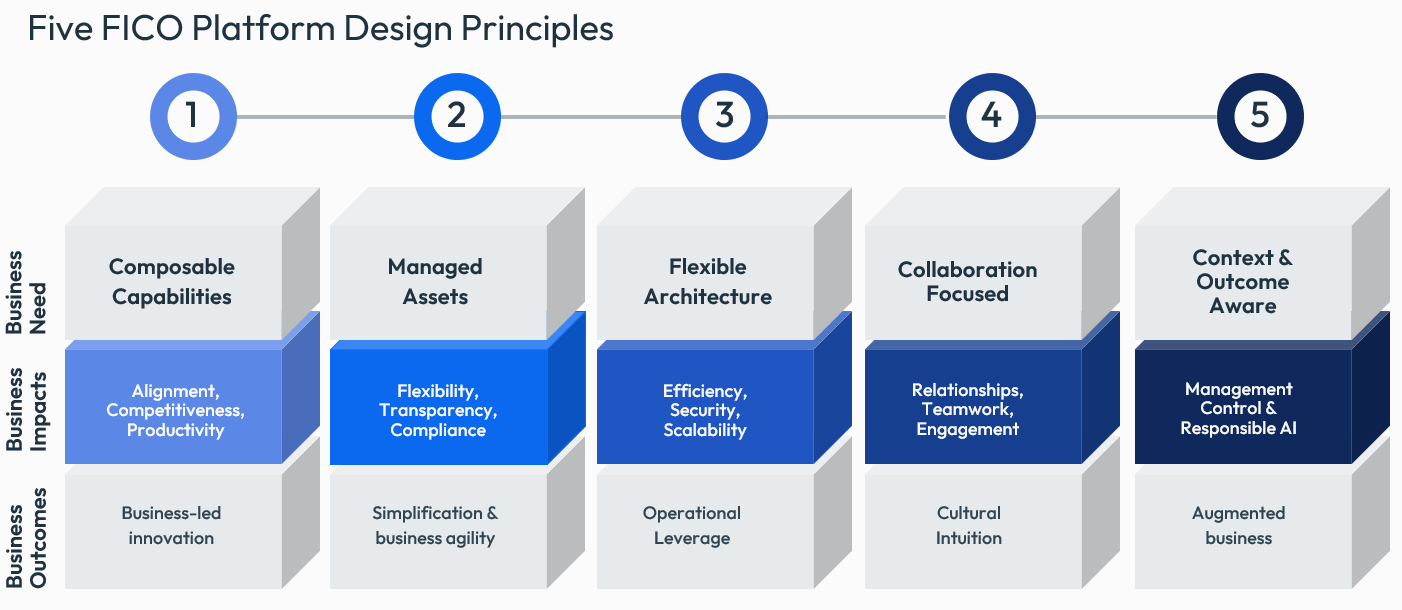The Composable Enterprise: Trends & Benefits from Composability
Executives, digital innovators, DevOps leaders, and line of business leaders should embrace a composable business model to gain agility and other benefits

Today’s digital landscape is being driven by the growing need for “composable enterprises” – business capability models that can quickly and seamlessly evolve in response to changing customer demands and market conditions. Executives, digital innovators, DevOps leaders, and line of business leaders must come together to drive this transformation forward.
In this blog post, you will learn about several key trends defining the composable architecture, what it is, and how to become a truly composable enterprise — one that can respond faster than the competition while maintaining trust and improving outcomes throughout the process of getting there.
Characteristics of a Composable Enterprise
Modularity, autonomy, and interoperability are the three key building blocks of a composable enterprise:
- Modularity is when data is organized into small, discrete units that can be used to create new data sets quickly and easily.
- Autonomy refers to the ability of components within an organization’s data architecture to operate independently from one another as business capabilities. while still functioning as part of an overarching data platform.
- Interoperability is the ability for data to flow between multiple silos without any manual intervention from IT or other departments in the organization.
By leveraging these three characteristics, organizations have access to deeper insights faster and can automate services delivery with intelligent automation toolsets that deliver real-time data feeds across all aspects of operations.
Benefits of the Composable Enterprise Model
The composable enterprise model helps organizations realize digital transformation with numerous benefits. Firstly, data science and product management teams can work more productively together to drive deeper insights across the organization’s operations and customer data. These insights and access to data lead to more effective decisions that drive better customer experiences, increased ROI, and improved business capabilities and outcomes.
Secondly, digital experience teams can quickly scale innovative solutions with enhanced agility by leveraging a modular data architecture and complex problem solving for creating intuitive solutions, without depending on IT resources or third-party vendors.
Finally, uniquely skilled innovators can work together in an open collaboration environment enabled by platforms rather than purpose-built OTS software products to develop and iterate powerful disruptive applications that keep the business healthy and ahead of the curve.
Kubernetes, Microservices and No-Code Tools Unlock Composability
Kubernetes is an open-source system for automating the deployment, scaling, and management of containerized applications. It provides a platform for deploying a wide range of services from existing workloads to microservices, streaming data services, machine learning applications and more. Kubernetes can be used to quickly scale existing architecture and provide improved composability, and reliability in monitoring and managing services.
Microservices architecture is a design pattern which breaks up a larger application into smaller, loosely coupled services. These services are independent and can be deployed, managed, and scaled independently of each other. By breaking up the composable architecture into smaller, more manageable chunks, organizations can quickly and easily introduce new features and packaged business services to meet customer needs.
No-code tools are a new breed of design and service delivery tools that allow business subject matter experts to create, test, and deploy powerful new applications without writing code. These tools leverage architecture and protocols that are built on top of existing cloud infrastructure, enabling organizations to quickly spin up sophisticated business applications without depending on IT.
Collectively, these capabilities help businesses to understand customer needs and compose solutions quickly and cost-effectively, which is the key to success in today’s digital economy. Gartner recently reported, “Organizations that embraced — and continue to embrace — the building blocks and principles of composable business were able to successfully leverage existing digital investments and, the best-case scenario, accelerate investment.”
Composable Enterprise Accelerators
By embracing a more composable business model, organizations have the power to turn their vision into reality. FICO Platform is top rated for offering a cloud-native, applied intelligence platform that accelerates the digital transformation journey. It empowers enterprises to move faster, make better decisions and drive customer engagement with an end-to-end platform that enables seamless and modular digital transformation regardless of where you currently are in your roadmap.

Composability is one of the five design principles for FICO Platform
How FICO Platform Helps You Build a Composable Enterprise
- Explore FICO Platform
- See why Forrester ranked FICO as a leader in digital decisioning systems
- Watch FICO Chief Product & Technology Officer Bill Waid discuss Applied Intelligence and FICO Platform
Popular Posts

Business and IT Alignment is Critical to Your AI Success
These are the five pillars that can unite business and IT goals and convert artificial intelligence into measurable value — fast
Read more
FICO® Score 10T Decisively Beats VantageScore 4.0 on Predictability
An analysis by FICO data scientists has found that FICO Score 10T significantly outperforms VantageScore 4.0 in mortgage origination predictive power.
Read more
Average U.S. FICO Score at 717 as More Consumers Face Financial Headwinds
Outlier or Start of a New Credit Score Trend?
Read moreTake the next step
Connect with FICO for answers to all your product and solution questions. Interested in becoming a business partner? Contact us to learn more. We look forward to hearing from you.
